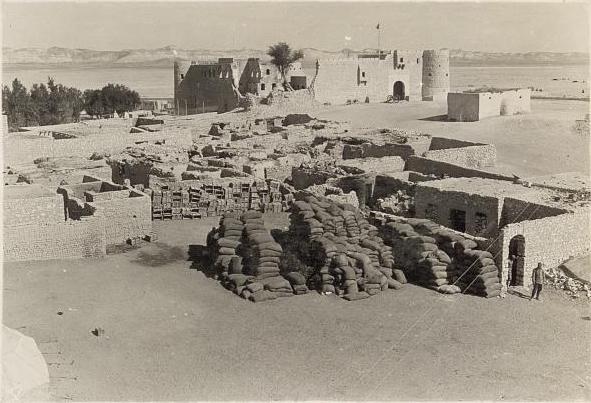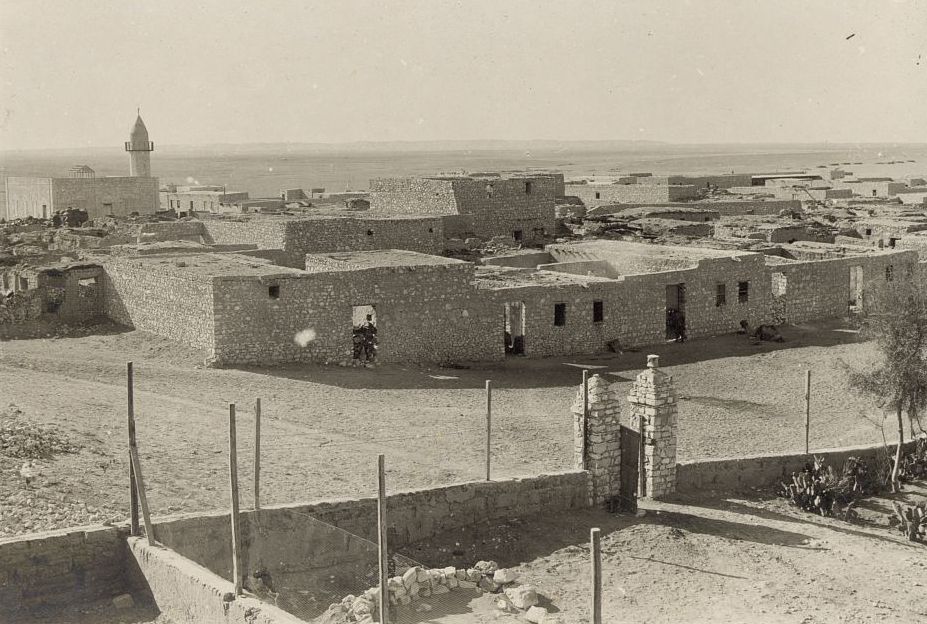|
Nekhel Municipality
Nekhel ( ar, نِخِل ; also spelled and pronounced ''Nakhl '' ) is the capital of Nekhel Municipality of North Sinai Governorate, Sinai, Egypt. It is located in the heart of Sinai Peninsula along the southern border of North Sinai Governorate with South Sinai Governorate. It is located at the skirts of El Tih Mountains and foothills at an elevation of . Coordinates of the city is 29°54'N; 33°45'E. Nekhel city is divided into 10 Markazes: Ras Naqb, Contilla, Sedr Elhitan, Tamd, Bir Grid, Khafga, Boruk, Netila, Ein Twibah and Assalam. History ;Pharaonic Era Nekhel was always part of the Egyptian Empire throughout history and it was part of the province of "Du Mafkat" in Ancient Egypt. Nekhel was the ancient capital of the entire Sinai province of Egypt, thanks to its outstanding strategic location at the exact center of the peninsula. In the 16th century BC, the Egyptian Pharaohs built the way of Shur across Sinai to Beersheba and on to Jerusalem. The re ... [...More Info...] [...Related Items...] OR: [Wikipedia] [Google] [Baidu] |
Governorates Of Egypt
Egypt has a Centralisation, centralised system of local government officially called local administration as it is a branch of the Executive (government), Executive. The country is divided into twenty-seven governorates ( '; ; genitive case#Arabic, genitive case: ; plural: '), the top tier of local administration. A governorate is administered by a governor, who is appointed by the President of Egypt and serves at the president's discretion. Governors have the civilian rank of minister and report directly to the Prime Minister of Egypt, prime minister, who chairs the Board of Governors ''(majlis al-muhafzin)'' and meets with them on a regular basis. The Ministry of Local Development, Minister of Local Development coordinates the governors and their governorate's budgets. Overview Egypt generally has four tiers of local administration units: governorates, cities, counties ''(marakiz)'', districts (subdivisions of cities) and villages (subdivisions of counties). There is a tie ... [...More Info...] [...Related Items...] OR: [Wikipedia] [Google] [Baidu] |
Muslims
Muslims ( ar, المسلمون, , ) are people who adhere to Islam, a monotheistic religion belonging to the Abrahamic tradition. They consider the Quran, the foundational religious text of Islam, to be the verbatim word of the God of Abraham (or '' Allah'') as it was revealed to Muhammad, the main Islamic prophet. The majority of Muslims also follow the teachings and practices of Muhammad ('' sunnah'') as recorded in traditional accounts (''hadith''). With an estimated population of almost 1.9 billion followers as of 2020 year estimation, Muslims comprise more than 24.9% of the world's total population. In descending order, the percentage of people who identify as Muslims on each continental landmass stands at: 45% of Africa, 25% of Asia and Oceania (collectively), 6% of Europe, and 1% of the Americas. Additionally, in subdivided geographical regions, the figure stands at: 91% of the Middle East–North Africa, 90% of Central Asia, 65% of the Caucasus, 42% of Southeast Asi ... [...More Info...] [...Related Items...] OR: [Wikipedia] [Google] [Baidu] |
An-Nakhl Fortress
The Fortress of an-Nekhel is a Ksar (castle) located in the Nekhel Municipality of the Sinai Peninsula in Egypt. It holds a strategic location at the exact center of the peninsula. Excavations at the site have revealed remains dating from Ancient Egypt. It has historically been an important stop and staging ground for Muslim pilgrims undertaking the Hajj or Umra, holy Muslim pilgrimages. Mamluk era A fortress was built on the site by the Circassian Mamluk sultan Al-Ashraf Qansuh al-Ghawri. A group of Christian pilgrims (including Felix Fabri) in 1483 recorded that there was a great well at an-Nekhel which was called the "Well of the Sultan" because during the pilgrimage season the Sultan employed a man with two camels to draw water all day for the pilgrims. The Frenchmen were on their way to Saint Catherine's Monastery and avoided the well due to uncertainty of the reception they might receive. Ottoman era The existing fortress was built by Sultan Selim in the sixteenth centu ... [...More Info...] [...Related Items...] OR: [Wikipedia] [Google] [Baidu] |
Hajj
The Hajj (; ar, حَجّ '; sometimes also spelled Hadj, Hadji or Haj in English) is an annual Islamic pilgrimage to Mecca, Saudi Arabia, the holiest city for Muslims. Hajj is a mandatory religious duty for Muslims that must be carried out at least once in their lifetime by all adult Muslims who are physically and financially capable of undertaking the journey, and of supporting their family during their absence from home. In Islamic terminology, Hajj is a pilgrimage made to the Kaaba, the "House of God", in the sacred city of Mecca in Saudi Arabia. It is one of the Five Pillars of Islam, alongside Shahadah (oath to God), Salat (prayer), Zakat (almsgiving) and Sawm (fasting of Ramadan). The Hajj is a demonstration of the solidarity of the Muslim people, and their submission to God ( Allah). The word Hajj means "to attend a journey", which connotes both the outward act of a journey and the inward act of intentions. The rites of pilgrimage are performed over five to six ... [...More Info...] [...Related Items...] OR: [Wikipedia] [Google] [Baidu] |
Jerusalem
Jerusalem (; he, יְרוּשָׁלַיִם ; ar, القُدس ) (combining the Biblical and common usage Arabic names); grc, Ἱερουσαλήμ/Ἰεροσόλυμα, Hierousalḗm/Hierosóluma; hy, Երուսաղեմ, Erusałēm. is a city in Western Asia. Situated on a plateau in the Judaean Mountains between the Mediterranean Sea, Mediterranean and the Dead Sea, it is one of the List of oldest continuously inhabited cities, oldest cities in the world and is considered to be a holy city for the three major Abrahamic religions: Judaism, Christianity, and Islam. Both Israelis and Palestinians claim Jerusalem as their Capital city, capital, as Israel maintains its primary governmental institutions there and the State of Palestine ultimately foresees it as its seat of power. Because of this dispute, Status of Jerusalem, neither claim is widely recognized internationally. Throughout History of Jerusalem, its long history, Jerusalem has been destroyed at least twice, Sie ... [...More Info...] [...Related Items...] OR: [Wikipedia] [Google] [Baidu] |
Beersheba
Beersheba or Beer Sheva, officially Be'er-Sheva ( he, בְּאֵר שֶׁבַע, ''Bəʾēr Ševaʿ'', ; ar, بئر السبع, Biʾr as-Sabʿ, Well of the Oath or Well of the Seven), is the largest city in the Negev desert of southern Israel. Often referred to as the "Capital of the Negev", it is the centre of the fourth-most populous metropolitan area in Israel, the eighth-most populous Israeli city with a population of , and the second-largest city in area (after Jerusalem), with a total area of 117,500 dunams. The Biblical site of Beersheba is Tel Be'er Sheva, lying some 4 km distant from the modern city, which was established at the start of the 20th century by the Ottoman Turks. The city was captured by the British-led Australian Light Horse in the Battle of Beersheba during World War I. The population of the town was completely changed in 1948–49. ''Bir Seb'a'' ( ar, بئر السبع), as it was then known, had been almost entirely Muslim and Christian, and wa ... [...More Info...] [...Related Items...] OR: [Wikipedia] [Google] [Baidu] |
Pharaohs
Pharaoh (, ; Egyptian: ''pr ꜥꜣ''; cop, , Pǝrro; Biblical Hebrew: ''Parʿō'') is the vernacular term often used by modern authors for the kings of ancient Egypt who ruled as monarchs from the First Dynasty (c. 3150 BC) until the annexation of Egypt by the Roman Empire in 30 BC. However, regardless of gender, "king" was the term used most frequently by the ancient Egyptians for their monarchs through the middle of the Eighteenth Dynasty during the New Kingdom. The term "pharaoh" was not used contemporaneously for a ruler until a possible reference to Merneptah, c. 1210 BC during the Nineteenth Dynasty, nor consistently used until the decline and instability that began with the Twenty-Fifth Dynasty. In the early dynasties, ancient Egyptian kings had as many as three titles: the Horus, the Sedge and Bee ( ''nswt-bjtj''), and the Two Ladies or Nebty ( ''nbtj'') name. The Golden Horus and the nomen and prenomen titles were added later. In Egyptian society, religion w ... [...More Info...] [...Related Items...] OR: [Wikipedia] [Google] [Baidu] |
Egyptian Empire
The New Kingdom, also referred to as the Egyptian Empire, is the period in ancient Egyptian history between the sixteenth century BC and the eleventh century BC, covering the Eighteenth, Nineteenth, and Twentieth dynasties of Egypt. Radiocarbon dating places the beginning of the New Kingdom between 1570 BC and 1544 BC. The New Kingdom followed the Second Intermediate Period and was succeeded by the Third Intermediate Period. It was Egypt's most prosperous time and marked the peak of its power. The concept of a "New Kingdom" as one of three "golden ages" was coined in 1845 by German Egyptologist Baron von Bunsen, and its definition would evolve significantly throughout the nineteenth and twentieth centuries. The later part of this period, under the Nineteenth and Twentieth dynasties (1292–1069 BC), is also known as the ''Ramesside period''. It is named after the eleven pharaohs who took the name Ramesses, after Ramesses I, the founder of the Nineteenth Dynasty. Possibly ... [...More Info...] [...Related Items...] OR: [Wikipedia] [Google] [Baidu] |
Nekhel 1
Nekhel ( ar, نِخِل ; also spelled and pronounced ''Nakhl '' ) is the capital of Nekhel Municipality of North Sinai Governorate, Sinai Peninsula, Sinai, Egypt. It is located in the heart of Sinai Peninsula, Sinai Peninsula along the southern border of North Sinai Governorate with South Sinai Governorate. It is located at the skirts of El Tih Mountains and foothills at an elevation of . Coordinates of the city is 29°54'N; 33°45'E. Nekhel city is divided into 10 Markazes: Ras Naqb, Contilla, Sedr Elhitan, Tamd, Bir Grid, Khafga, Boruk, Netila, Ein Twibah and Assalam. History ;Pharaonic Era Nekhel was always part of the Egyptian Empire throughout history and it was part of the province of "Du Mafkat" in Ancient Egypt. Nekhel was the ancient capital of the entire Sinai province of Egypt, thanks to its outstanding strategic location at the exact center of the peninsula. In the 16th century BC, the Egyptian Pharaohs built the way of Shur across Sinai Peninsula, Sinai ... [...More Info...] [...Related Items...] OR: [Wikipedia] [Google] [Baidu] |






